Actually, it was 930 kilometers and made for the best week of my 2015.
During Semana Santa, I traveled through six Departamentos (or Provinces) of Colombia with my family. We started our trip the Saturday before Holy Week to get back home by Wednesday or Thursday and avoid the vacation traffic and hassles.
Though at first, the idea of going through windy roads and endless climates made me sick to my stomach, after some back-and-forth with my parents, we decided that for the sake of my nausea, we would take the easiest (on my stomach) routes and take the hard, less scenic routes, at night.
And so, I traveled through a never-before-explored (by me) chunk of the country with not a single motion sickness pill. Ta-da!
Side note: For these kinds of trips I stress the need for a car, even a rented one because it gives you so much freedom and comfort. If you don’t want to take the trip to the airport to rent a car, there’s a couple in town like Medellín Rent a Car and Global Car Rental.
The Starting Point- Manizales- Bogotá
As some of you may know, my family and I are from Manizales: it’s small, it’s conservative, I’ve said it all before. This is where I met up with my family to begin our journey (meaning I could add the trip from Medellín to Manizales in the mix, but I won’t get braggy about it).
We left Manizales around 2 a.m, this being one of the least enjoyable parts of the trip, and took a particular route to Bogotá (through Mariquita, Cambao, Albán and Facatativá, entering Bogotá on 13th) where we arrived at around 8:30 a.m.
The upside to this route was the time and money we saved. Usually this trip takes eight hours and has more expensive tolls, while our route was equally safe, with lots of fruit stands on the side of the road, and has a total of 17,800 pesos (about $6) in tolls.
There was very little to highlight on this part of the trip, besides the beautiful South entrance to the capital, which gives you a long view of the Sabana on your way to the concrete landscapes of the metropolis.
What my family enjoys most about road tripping is food from road stops.
The tamales in the province of Cundinamarca are famous, and you can get warm rib broth that Colombians like to have for breakfast, or hot chocolate. Great for the cold weather.
On the side of the road, going into the city you find a kilo of strawberries for a little over a dollar!
In Bogotá, we prepped for the rest of the trip, purchasing a camera to document and strolling through my favorite donut chain in the world, Krispy Kreme.
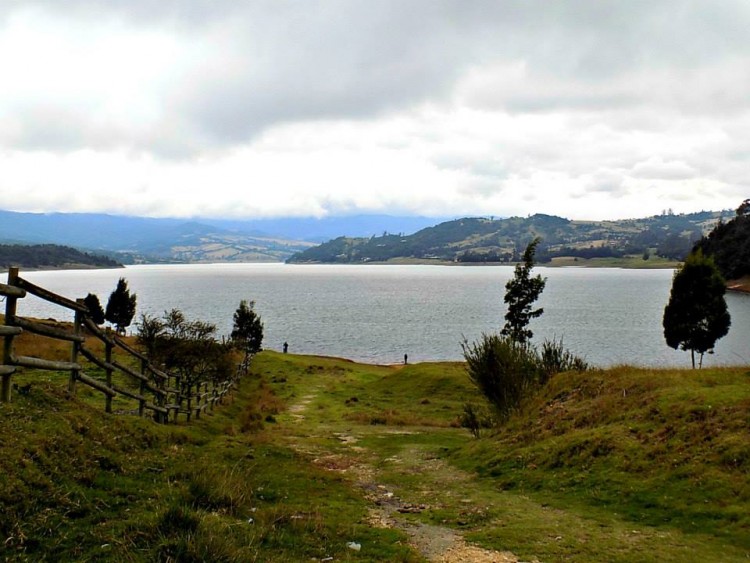
Bogotá-Villa de Leyva
Villa de Leyva is the Santa Fé de Antioquia to the people of Bogotá, meaning this is where they like to get away for weekends, holidays, what have you.
I haven’t met a person who, after traveling to Villa de Leyva, hasn’t placed in their “Most Beautiful Towns of Colombia” list. (It’s at the very top of mine.)
Its architecture is white, its streets are cobblestone and old fashioned, no modern buildings or changes allowed. Also, there’s so much history here, and pre-history with lots of fossils.
Important Stops before Villa de Leyva
Bathroom stops, sure, but beautiful views and historical landmark stops are vital.
The road to Villa de Leyva (and Boyacá in general) is perfect; smooth with great landscapes and cool weather.
We stopped before the province of Boyacá to take a look at Represa del Sisga, a dam on the Sisga river in Chocontá, Cundinamarca.
It was pretty cold out but entirely worth the stop, simple, with no restaurants or many vendors, a bench to take in the fresh air and lushness is more than enough.
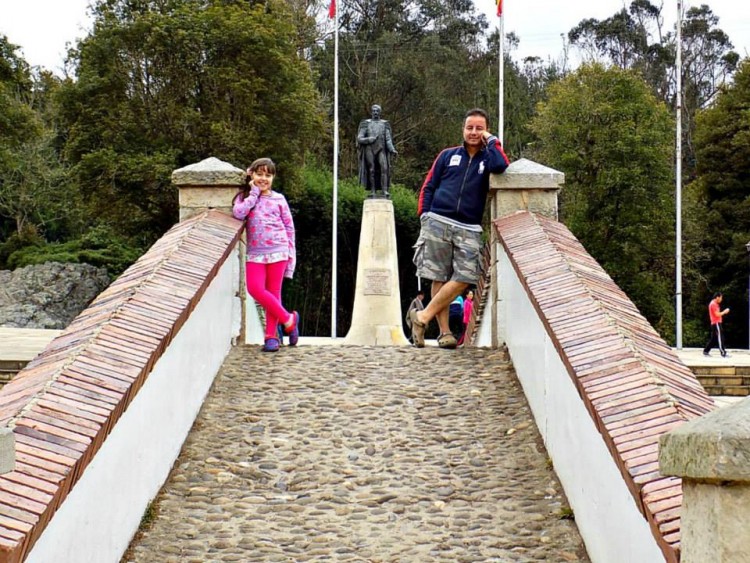
Our second stop was at the historical landmark: Puente de Boyacá, where the Battle of Boyacá was fought (the battle that defined our independence from Spain).
The bridge itself is surprisingly small, but the landmark is quite big with a café and a restaurant.
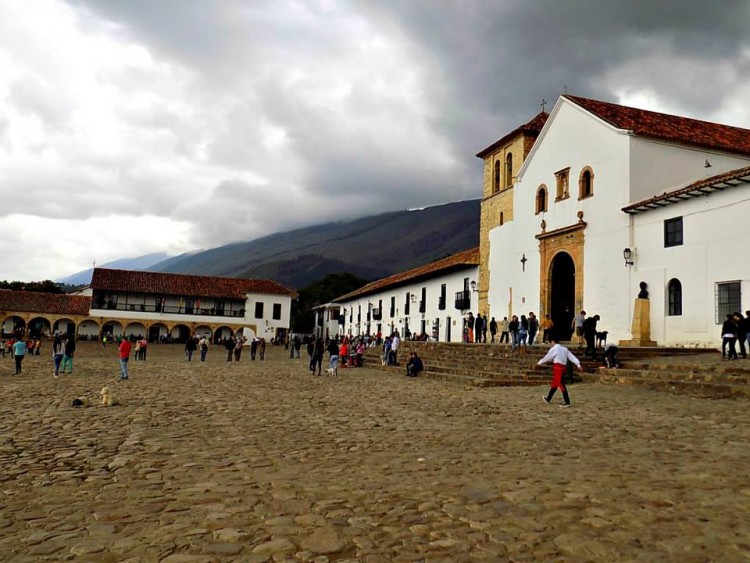
The trip took only a few hours, and Villa de Leyva itself is breathtaking.
The square is the biggest of all towns in Colombia, and the attractions are insane: a huge Terracotta House, the blue-green lagoons, the fossil museum, biking, and so many more.
We had a great, cheap stay in Hostal Las Margaritas; it’s not a hostel, just an affordable hotel near the central square.
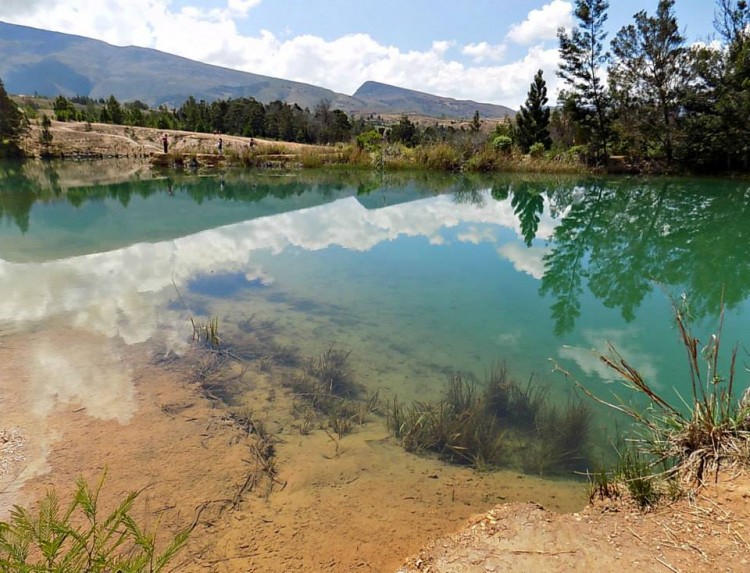
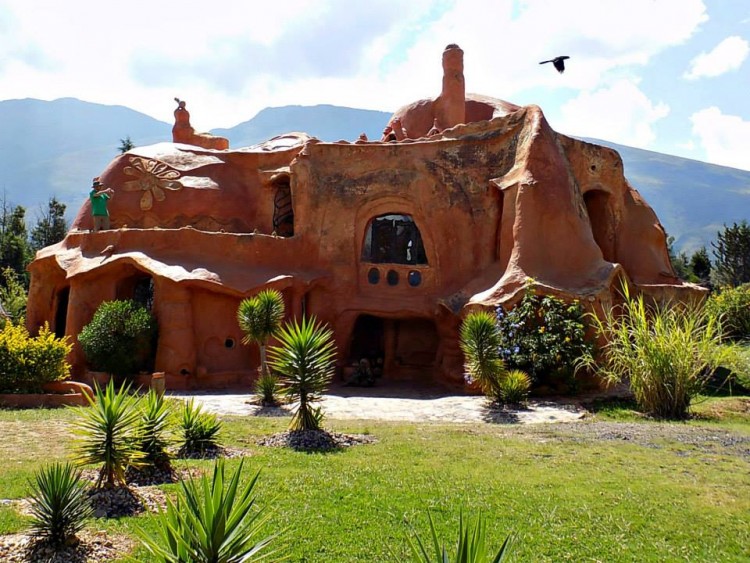
Villa de Leyva-San Gil
I can’t stress enough how beautiful the roads are in Boyacá. It’s the potato country, so the stretches of purple fields are breathtaking.
We debated whether to stop in Tunja, another beautiful- cold- town nearby after Villa de Leyva but, because of time, we resorted to saving Tunja for a trip in the future and went straight towards San Gil, Santander.
The trip was diverse and beautiful; we were surprised at the variety of landscapes you get in such a small region.
We stopped to get arepas; Boyacá is known for their “arepas Boyacenses” that- if you’ve never liked arepas- will change your mind. They’re flawless: quote me. They’re small and round and yellow.
San Gil is the epicenter of adventure sports. Waterfall climbing, Caves, Rafting, you name it, they have it. The foreigner crowd is constant even though the town itself is pretty small, the activities bring in lots of tourism.
The town square, as always, is the place most filled with life. We had the pleasure of seeing street performers gathering crowds and enjoyed some street food and the fruit markets.
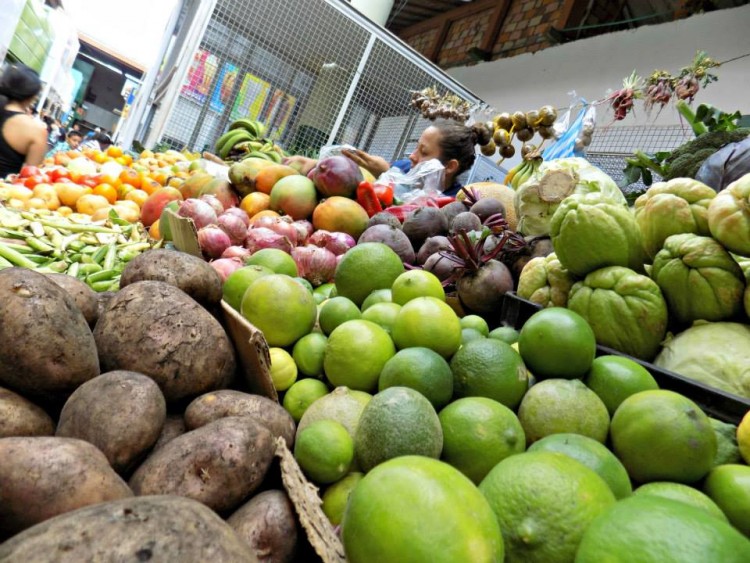
If you have some free time in San Gil, take an afternoon to go through the Gallineral park.
Everyone around knows it, and it’s a bit of an oasis from the otherwise not very scenic San Gil “urban” area.
You’ll find lots of beautiful birds, some fish, lizards, and there’s a pool for those that wish to use it. The price of entry is only around 6,000 pesos (about $2).
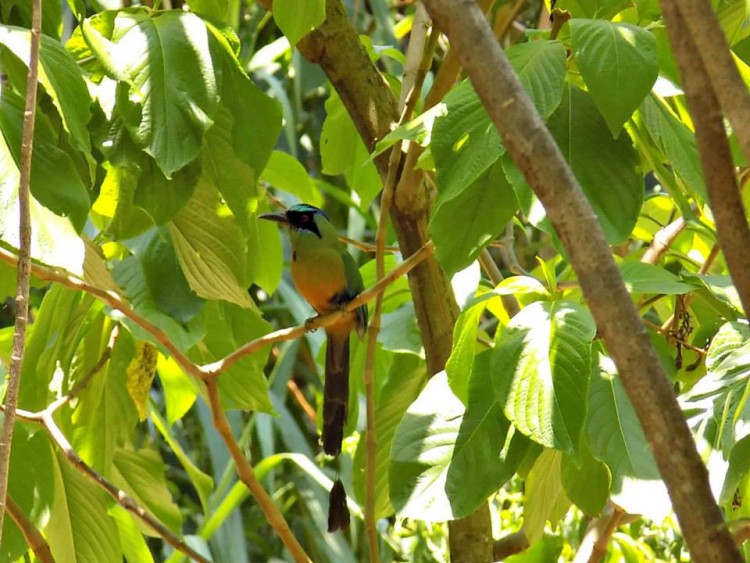
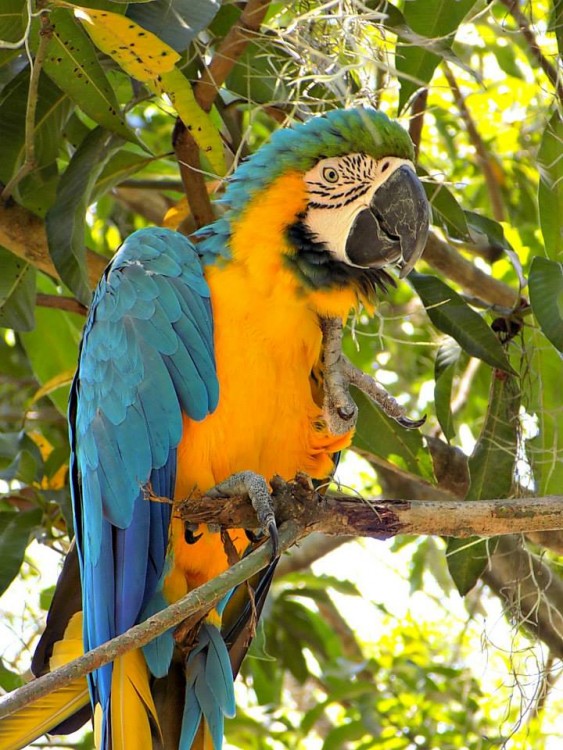
The best part about San Gil is that it’s cheap and close to other towns, which is why while staying here, we traveled to from Barichara and Charalá, towns about 30 kilometers away that each had their charm and delights.
Barichara
Barichara is debated as the most beautiful town in Colombia. I say debated because Villa de Leyva gives it a run for its money. I’ve had heated discussions with other Colombians about this matter.
It’s beautiful and historical, like most of Santander province and is almost indescribable. The artisans in Barichara I recommend especially, they do great work for reasonable prices.
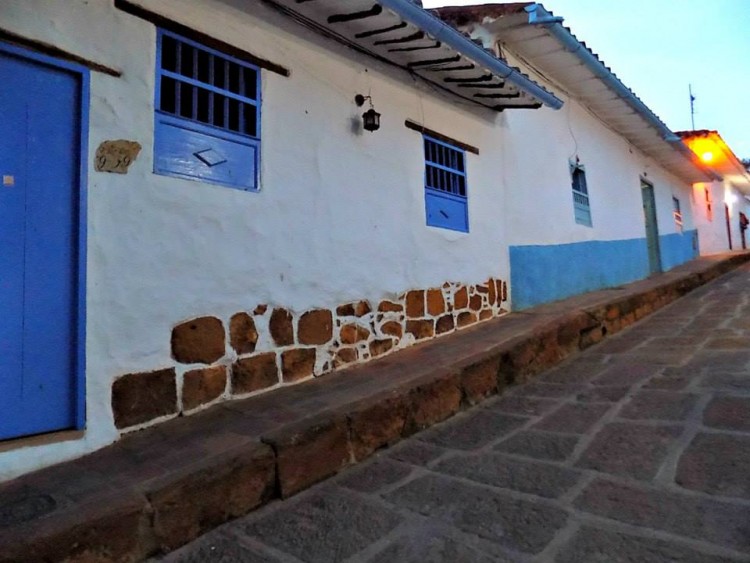
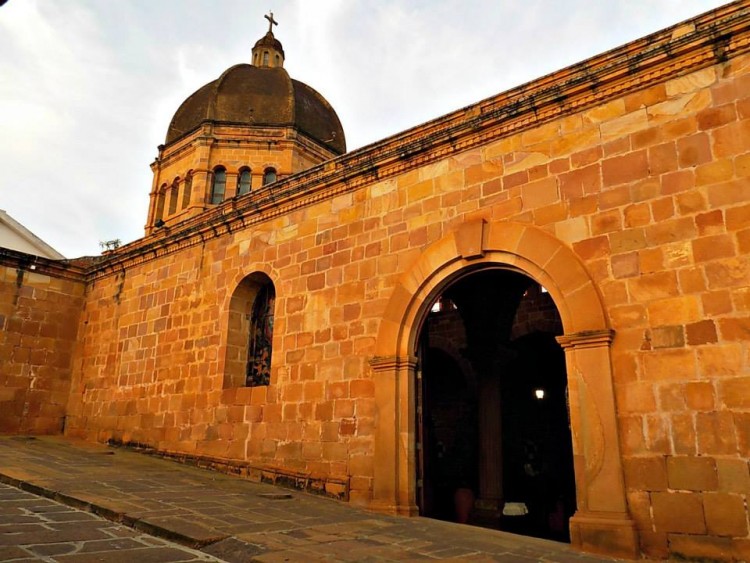
Charalá
A lot of people don’t hear about Charalá; I hadn’t even heard of it until my Introduction to Textiles professor told us about their cotton museum.
It’s called Lienzo de la Tierra (or Canvas of the Earth) museum and, though it’s small budget, for 1,000 pesos (30 cents!) you can learn about the history of cotton in Santander, its evolution after the Spanish invasion and the tradition that has led to its current state.
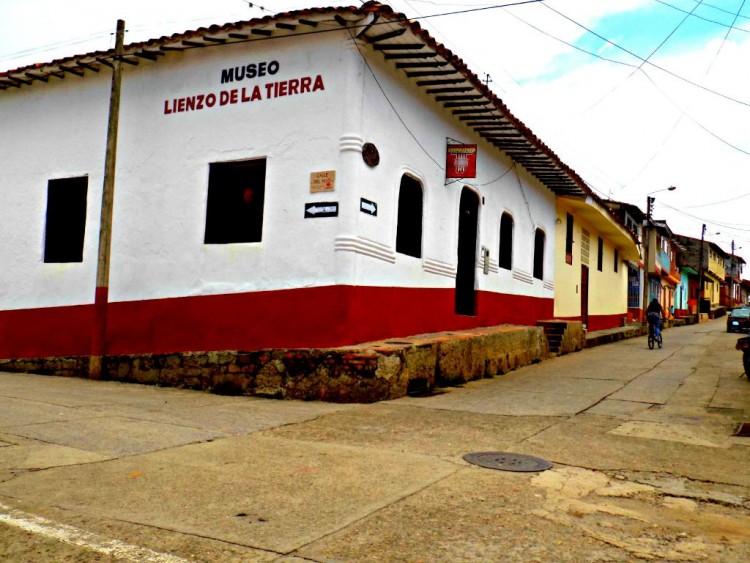
You can also buy bags, shoes, ponchos, etc. made from their cotton by hand.
However, if that’s not your kind of thing, no worries. The central square has a beautiful church and a colossal tree shading almost every part of it. Have a coffee and sit in the park, the weather is great.
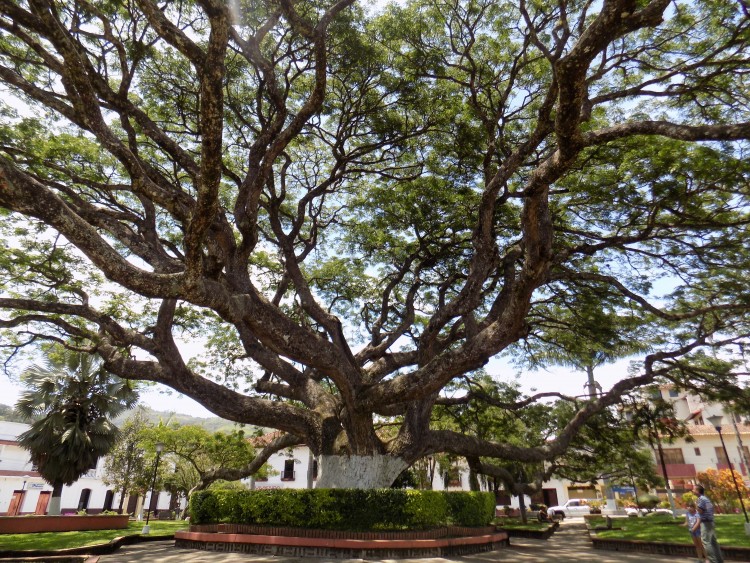
San Gil-Bucaramanga
The roads in Santander are a whole other ballgame. The views are no longer purple fields of potatoes.
On the way to Bucaramanga we stopped at the infamous Parque Nacional Chicamocha or PANACHI (only for a few minutes, but you’re welcome to do the tourist thing and I understand they have cable cars to see the canyon).
We stopped for photos and continued our trip to Bucaramanga.
I don’t have a lot to say about the city because we went for one sole reason: shoes.
My mother is a shoe-lover and Bucaramanga is known for making great affordable shoes. (Hence the many ‘Bucaramanga’ shoe stores in the country.) We drove straight to the shoe center of town and then accepted the very long trip ahead of us.
We said goodbye to Bucaramanga, not as beautiful as Villa de Leyva or Barichara but it’s somewhat the Medellín of Santander, and everyone but the driver prepared for sleep.
Sadly, I can’t say we stopped many more times after that. Only once for some food near Pablo Escobar’s Hacienda Nápoles (which we have yet to visit), and once for a nap- for the driver- and by around 4 a.m. we were back in Medellín on Thursday of Holy Week, right before the rush traffic leaves town for their adventures.
900 km of Colombia by land in less than a week were hectic, though not stressful, and not only did I enjoy it, it also added a bunch more trips to take in the future!
Have you been to any of these places before? Tell us about your experience in the comments below!

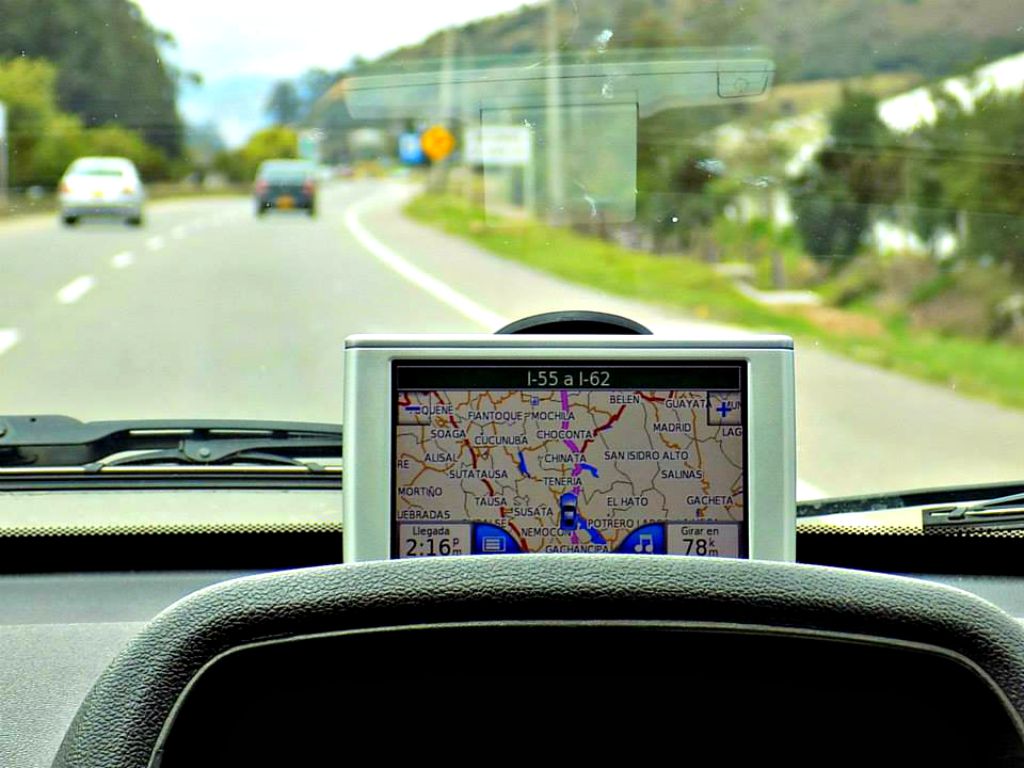
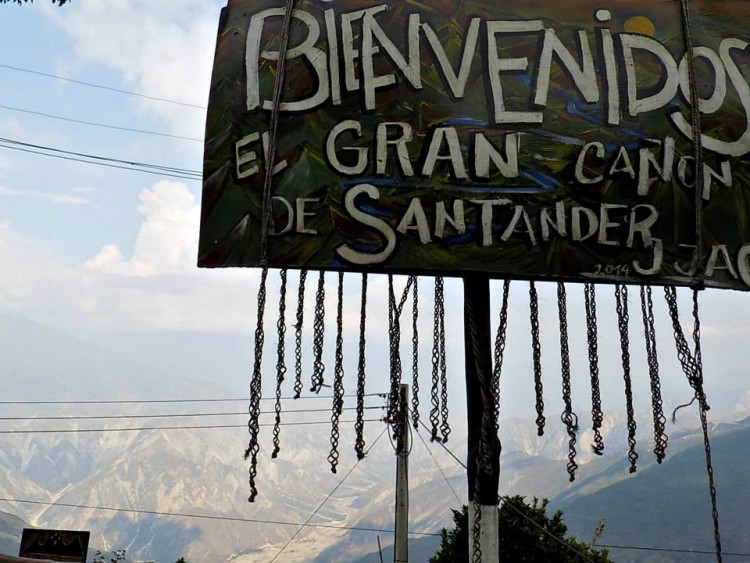
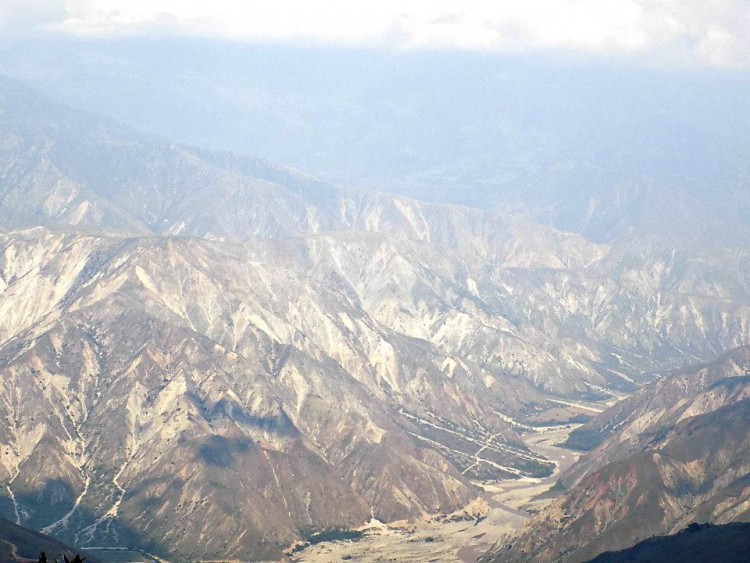



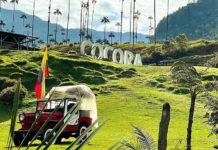






Nice road trip. Very informative. I am planning spending 6-8 weeks in bucaramanga in 2016 but starting off in Medellin. I don’t really want to stop over in Bogota. You mentioned the roads in Santander. Was there a problem? I would either rent a car or ride with a friend and any advice on rentals or routes would be much appreciated. Thanks for a great read. alan
Hi Alan, Thanks for reading.
The trip to Bucaramanga from Medellín is a bit of a long one but the road is good. You leave Medellín through Rionegro and Marinilla, go towards Puerto Triunfo and get on the “Ruta del Sol” road, it’s about 5 hours until you hit a crossing with a “Bucaramanga” sign, and one hour to the city from that point.
Hi Ximena im planning to do the same road trip. can you please tell me where did you slept and is haciendo napoles is after bucaramanga. Thank you
Great article. Lots of good, useful information, plus some humor. We are coming to Medellin from the U.S. in December/January. While we may not have time to make this trip, I am keeping this information should we choose to move permanently to Medellin. Sounds like a wonderful way to spend out of the city. By the way, when you say “cold” what is the actual temperature? Thanks much!
Hi Tes,
I hope you have a great time in Medellín! Temperatures in Colombia vary but, we are still a country located close to the equator so you have to reach high elevations to get “cold”. Tunja is usually around 15 degrees Celsius and it stands at 9,300 ft above sea level. For Colombians, 15 degrees C is cold.
Driving is on the right hand side of the road-most cars have standard transmissions. Colombia s fleet is composed mainly of cars with 4-Cylinder engines that are of European and Japanese manufacture.
Hi Ximena,
Thanks for your article. Its very helpful. My girlfriend and I going to colombia for vacation in a month or so. We are flying into Medellin, and want to rent a car and drive down to zone cafetera, and then to canon de rio claro near puerto triunfo/doradal. Do you know if all these roads are safe to travel on? Or if there is anything we should be concerned about regarding renting a car and traveling these specific roads. Full disclosure: our spanish is pretty minimal. Also, we will be traveling only during day time and plan to spread it out over 3/4 days making stops along the way (thermales, etc). Any help would be great!
Jake,
That sounds like a wonderful trip! Most toll booths in the country will have the most recent copy of the Colombian roads map book. You can check the status of the roads with INVIAS and with that same page’s twitter account. Traveling during the day is the best idea, keep your driver’s license and passport on you and you shouldn’t have any issues on those roads. Have a good trip!